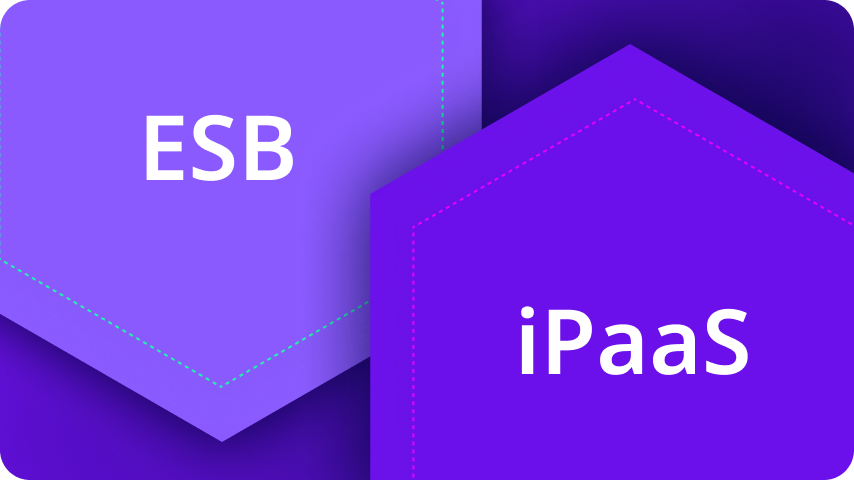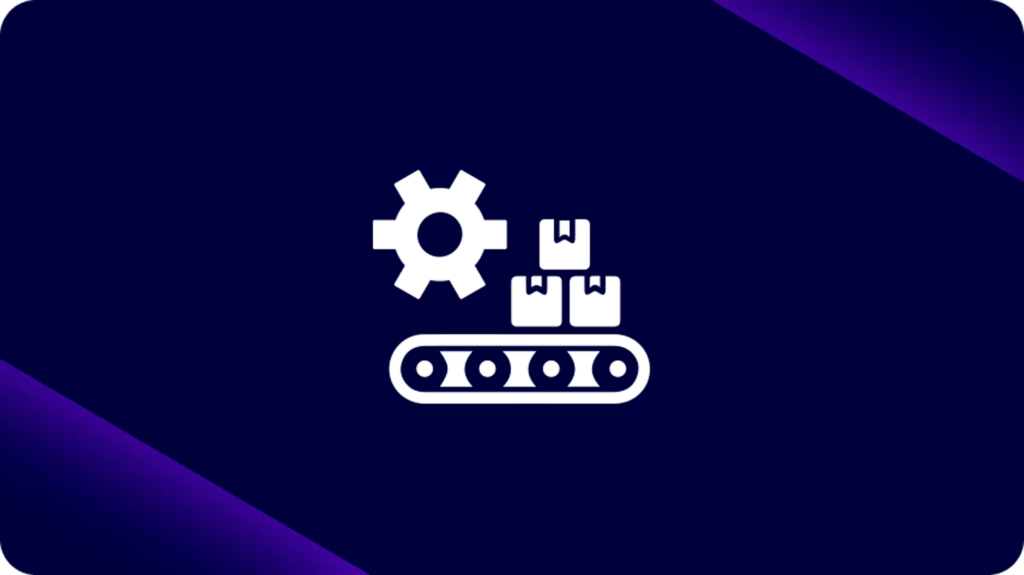March 30, 2023
Um Enterprise Service Bus, também conhecido como ESB, é um tipo de arquitetura de TI que permite que vários aplicativos se comuniquem por meio de um hub ou infraestrutura tipo barramento. Mas, em profundidade, o que é Enterprise Service Bus e o que ESB significa para sua integração de TI?
Uma integração ESB basicamente estabelece princípios e regras que orientam os recursos de comunicação de diferentes aplicações.
>> Agende uma demonstração personalizada com nossa equipe de especialistas e veja como o iPaaS da Digibee trará eficiência ao seu negócio.
Como funciona um ESB?
Um ESB é uma maneira centralizada e flexível de conectar vários aplicações Ele funciona conectando sistemas, capturando dados e funcionalidades, tornando esses recursos acessíveis e reutilizáveis por outras soluções.
Uma arquitetura ESB fornece um sistema otimizado e ‘conectável’ que é escalável, em um sistema centralizado para monitorar e gerenciar transações e interações entre aplicações.
A evolução da integração de TI
Os ESBs surgiram no cenário de integração de TI no final dos anos 1990 como uma solução para os desafios dos modelos de integração ponto a ponto (P2P). A estrutura semelhante a um barramento de um ESB permite o desacoplamento de conexões de aplicações com códigos personalizados e remove a co-dependência de integrações P2P, permitindo que vários soluções se comuniquem entre si por meio de um ESB centralizado.
A integração empresarial evoluiu muito desde os anos 90. Naquela época, os modelos de integração P2P eram a norma. A maioria dos departamentos de TI conectava quase tudo obedientemente com sistemas de integração P2P codificados individualmente.
Usar P2P significava que duas aplicações podiam se comunicar entre si usando código personalizado, o que funcionava bem quando havia um número limitado delas. Uma vez que várias soluções estavam na mistura, no entanto, o modelo P2P rapidamente revelou suas deficiências.
Os desafios dos modelos de integração ponto a ponto (P2P)
Os sistemas P2P tornam-se rígidos com o tempo porque criam fortes dependências entre as aplicações e não são escaláveis. Eles gradualmente se tornam mais difíceis de gerenciar porque usam código personalizado para cada conexão sem hub central para monitorar sistemas ou solucionar problemas.
A codificação personalizada de sistemas P2P costuma ser chamada de ‘código espaguete’, porque é composta por um sistema entrelaçado que não possui uma forma central de comunicação entre suas partes. Esses tipos de sistemas P2P são propensos a falhas por causa de sua falta de capacidade de comunicação e sua complexidade cada vez maior.
Os crescentes desafios de P2P eventualmente levaram ao surgimento do Enterprise Service Bus, ou ESB. Pode parecer que os ESBs foram a resposta para os desafios P2P do passado, mas mesmo os ESBs têm suas limitações.
As deficiências dos ESBs
Usar um ESB tem sido um método de integração eficaz por décadas, mas o conceito foi criado antes dos avanços na tecnologia de nuvem. Assim, conforme a adoção da nuvem aumenta, a eficácia de um ESB diminui. ESBs eram ótimos quando toda a TI era baseada em servidor e quase toda a tecnologia era gerenciada por equipes internas.
No entanto, quando os desenvolvedores criaram os ESBs originalmente, além de não terem previsto as tecnologias de nuvem, também não vislumbravam as vantagens de uma plataforma de integração empresarial como serviço (iPaaS).
Hoje em dia, uma das maiores limitações dos ESBs é que eles são construídos para tecnologia local, baseada em servidor, que necessita de gerenciamento interno de sistemas locais ou legados. Como resultado, os ESBs não podem trabalhar com tecnologia baseada em nuvem, sistemas de integração híbridos ou tecnologia empresarial iPaaS.
Também há limitações adicionais para um modelo ESB. Geralmente a arquitetura complexa e não tem a capacidade ou a agilidade para escalar (ou retrair) facilmente. Um ESB também pode levar tempo, dinheiro e esforço significativos para ser estabelecido. Desenvolvedores profissionais altamente qualificados (e altamente pagos) são necessários para desenvolver ESBs. Ou, então, precisam fazer treinamento especializado para se tornarem certificados com um provedor de integração estabelecido (ou tradicional) para implementar e manter um Enterprise Service Bus.
Além disso, de acordo com O relatório State of Enterprise Integration da Digibee, 98% dos entrevistados tiveram que reconstruir integrações para as principais aplicações de negócios existentes nos últimos 12 meses.
Embora os ESBs já cumpram o seu propósito há vários anos, há questionamentos crescentes sobre sua obsolescência. Todo o tempo, treinamento, dinheiro e esforço extras investidos em ESBs leva a perguntas sobre como aumentar a agilidade e diminuir o custo de suas integrações de TI, e até mesmo a perguntas como Pro-Code versus Low-Code: qual é a melhor solução para sua integração de TI?
Os ESBs ainda podem ter um propósito valioso para sistemas de back-office legados que não passarão por mudanças, mas não devem ser considerados para iniciativas centradas na nuvem, onde crescimento dinâmico, escala e mudança são previstos.
Para mais flexibilidade e escalabilidade, muitos acreditam que o futuro da integração empresarial está em uma plataforma de integração empresarial como serviço (iPaaS).
O que é um iPaaS corporativo? O futuro da integração empresarial
Uma solução iPaaS para empresas é um serviço de assinatura low-code e escalável, que conecta os sistemas locais existentes às novas tecnologias baseadas em nuvem. Uma solução iPaaS pode integrar dados e plataformas, independentemente de silos subjacentes, arquitetura ESB ou infraestrutura legada P2P.
O iPaaS integra dados de diversas fontes, incluindo sistemas de gerenciamento de relacionamento com o cliente (CRM), software de planejamento de recursos empresariais (ERP), plataformas de comércio eletrônico e sistemas de integração de automação.
Migrar para uma solução iPaaS proporcionará a capacidade de conectar todos os seus sistemas e softwares ERP e CRM de ponta a ponta em uma única plataforma, eliminando silos e integrando programas e dados em toda a empresa. Uma solução iPaaS também oferece a flexibilidade e agilidade para escalar ou reduzir facilmente a arquitetura do sistema e integrar sem dificuldades tecnologias baseadas em nuvem, aplicações locais com código personalizado e sistemas híbridos.
Descubra como obter retorno mais rápido com suas integrações de TI com uma plataforma como serviço de integração empresarial (iPaaS).
As vantagens do iPaaS com a diferença Digibee
A tecnologia fez avanços significativos desde a década de 1990. Esteja você ainda usando modelos P2P desatualizados ou integrações ESB, o iPaaS empresarial da Digibee pode fazer uma grande diferença para sua empresa.
A Digibee oferece uma experiência de integração de TI suave, simplificada e rápida. Nosso iPaaS é uma plataforma de integração nativa da nuvem e pronta para grandes empresas, que acelera o tempo de obtenção de valor, mitiga riscos e ajuda a reduzir custos de TI. O iPaaS fácil de usar da Digibee também é intuitivo, de modo que todos os níveis da equipe de TI podem gerenciar a plataforma com muito pouco treinamento necessário.
É hora de evoluir com Digibee. Aprenda como integrar e modernizar sua empresa e conecte facilmente os pontos entre construir, executar e monitorar com a plataforma iPaaS intuitiva da Digibee.
Descubra todos os benefícios da moderna plataforma de integração em nuvem da Digibee, e faça a sua escolha entre com nosso time de especialistas para saber mais.









